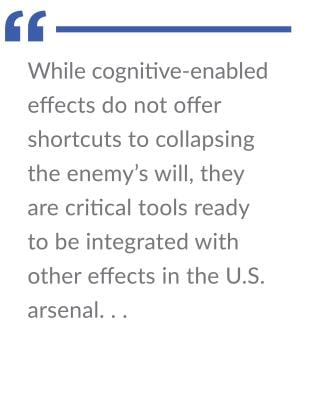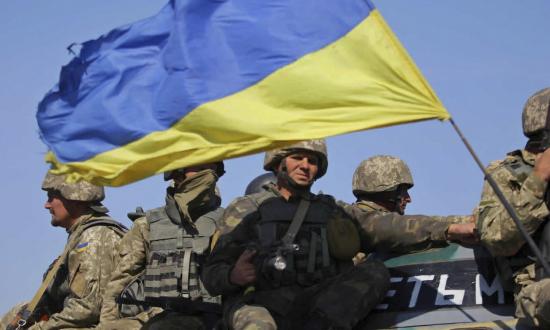Okinawa, Japan
3 May 2025
It started when the lights went out.
The blackout began just after sunset in Naha then spread quickly throughout Okinawa. One by one, even the island’s U.S. military installations fell dark. As failures rippled through the power grid and threatened vital services, the overwhelming reaction was a mix of frustration and acceptance. Okinawans breathed a sigh of relief as the island regained power three days later, but just as normalcy seemed to be returning, residents found their digital landscape had been altered drastically.
Once connectivity was restored, trusted news websites were either inaccessible or hacked to display divisive propaganda. This discovery and mounting evidence in the power grid’s network eliminated all doubt: Okinawa was under attack. The attacker’s intended target was the U.S.-Okinawa relationship. Japanese and U.S. government officials quickly warned of the ongoing assault, but their attempt to blunt the attack inadvertently increased curiosity at a time when information was scarce. As individuals sought answers, the dearth of credible sources drove them to social media—where targeted disinformation was waiting.
In the years preceding this cyber onslaught, the attackers had studied Okinawa’s communities and human networks, attempting to “bin” residents into targetable groups to identify exploitable fissures. With this information in hand, they coordinated the blackout’s timing to induce confusion, frustration, and curiosity just as their digital offensive commenced. This multipronged attack created conditions ripe for incendiary messages to spread rapidly and reignite historical tensions.
Sensational posts quickly filled U.S. service members’ social media feeds, pushing a narrative that Okinawans resented their presence and that the island’s fragile infrastructure was unsuited to support them, their families, or their mission. In turn, Okinawans were bombarded with false reports that U.S. negligence was to blame for the outage, along with stories accusing U.S. Marines of atrocities during the blackout. Deepfake videos quickly joined the fray and drove both sides toward increasingly accusatory and aggressive postures. As this manufactured reality took hold, some targeted but unwitting individuals added to the narratives spontaneously, and social media algorithms began mixing real posts with the seemingly real. These actions all raised the volume of mis- and disinformation.
What followed was a meteoric rise in tensions that forced both Japanese and U.S. leaders to lower their expectations for the relationship: cooperation to address regional challenges slowed, dialogues to increase the number of U.S. service members in Okinawa were postponed, U.S. military and Japan Self-Defense Force training schedules were reduced, and combined exercises were canceled.
What began as a seemingly benign power outage was, in fact, an integrated cyber and psychological campaign targeting a critical vulnerability in the U.S.-Japanese relationship: Okinawa. The high-water mark of relations receded as quickly as it had arrived, washing away opportunities to strengthen the U.S.-Japan strategic alliance.
Fact or Fiction?
This fictional crisis illustrates an increasing reality: To build enduring advantages, the United States must address threats and opportunities in the cognitive dimension.1 A 2022 Government Accountability Office report underscores this point. It notes that while U.S. competitors and adversaries are using technological advances to influence human cognition and offset traditional U.S. warfighting advantages, the U.S. military faces “a number of institutional challenges,” including “a lack of leadership emphasis, lack of resources, the implications of new technologies, and dated processes.”2
The United States is falling behind in confronting national security challenges at the intersection of technology and cognition. To catch up and address this emerging threat, the United States should develop and implement a concept that treats the cognitive dimension as offensive and defensive maneuver space. Doing so will require in-depth study and institutional commitment in three key areas:
• Establish a functional understanding of cognitive warfare and its potential effects.
• Explore approaches to cognitive warfare being developed by U.S. competitors and adversaries.
• Use the tenets of maneuver warfare as a framework for gaining the initiative in the cognitive dimension.
These areas are not all-encompassing, but they are crucial components of any effort to address this emerging threat. Undertaking this endeavor requires first considering what cognitive warfare is, along with how it is evolving.
Understanding Cognitive Warfare
Battlefields across the conflict continuum now reach beyond the physical and cyber domains: An individual’s cognition is now a target. Advances in cognitive psychology and information communication technology (ICT) enable actors to target individuals’ situational comprehension and will with precision.3 In light of these changes, cognitive warfare (CW) has emerged as a new war-fighting concept.
While cognitive warfare lacks a widely accepted definition, initial proposals contain at least one of three common themes:
• The intent to influence specific individuals and groups on political matters, understanding that war is a continuation of politics by other means4
• The explicit targeting of human cognition—how people perceive and interpret information to gain knowledge and understanding5
• The use of psychology and advanced technologies to target individuals or groups precisely6
To move forward, a more succinct definition of cognitive warfare may provide more precision and guide concept development: actions and activities that deliberately target individuals’ cognition to affect human will.
An Evolving Concept
Cognitive warfare’s underlying goal is not new. Advocates have invoked both Clausewitz’s emphasis on will as well as Sun Tzu’s praise for “winning without fighting” as early examples of the concept. What is new, however, is the specificity with which CW can be carried out.
An operation’s precision generally is limited to the smallest identifiable group that can be analyzed and targeted. Rudimentary capabilities previously limited CW-like operations to masses, nations, organizations, and occasionally high-priority leaders. Today, however, disruptive ICT has made identifying thousands—even millions—of specific individuals, analyzing their behaviors and traits, and targeting their cognition possible. For example, Russian actors used illegally acquired data on Americans to deploy targeted disinformation messaging and sow discord before the 2016 U.S. presidential election. This campaign offers insight into how CW is evolving: It sought to influence specific individuals within certain groups and stoke the growing divisions in American society.7 These tactics will almost certainly continue to mature.
Effective CW, however, achieves effects far beyond the scope of legacy influence operations. Actors worldwide recognize this changing landscape and are developing methods to capitalize on its opportunities. It is in this context that the United States must develop its approach to CW—defensively as well as offensively.
Manufacturing Reality
Cognitive warfare operations are growing rapidly in quantity, range, precision, and effectiveness, increasing their potential to achieve strategic success. As these capabilities grow, operations are increasingly able to evolve into complex attacks, with synchronized actions across domains achieving nonlinear effects. Current incidents demonstrate dangerous potential: Taiwan concluded China had effectively integrated disinformation and cyber attacks in response to U.S. Speaker Nancy Pelosi’s visit to Taiwan in August 2022.8
Two evolving CW approaches that seem poised to integrate scale and precision are cognitive domain operations and coordinated chaos.
Cognitive domain operations (CDO) aim to use emerging and future technologies—particularly artificial intelligence (AI)—to advance battles into “the realm of the human mind.”9 Although the full scope of CDO is unclear, they appear to use neuroscience and psychology to maximize effectiveness.10 They also seem to include a supporting function: optimizing human-machine interactions to enable better decision-making.11 While the feasibility of leveraging AI to affect human cognition remains unknown, development is ongoing.
Coordinated chaos synchronizes cyber attacks and disinformation to manufacture crises and disrupt public responses.12 Its general approach is threefold: (1) long-term preparation identifies targetable individuals and networks, (2) cyber attacks raise tensions and inflame emotions, and (3) tailored messaging attempts to influence targeted individuals. Emerging research in cognitive psychology emphasizes the potential efficacy of this approach. One example is the recent discovery that feelings of confusion or frustration stimulate an individual’s curiosity while simultaneously reducing the scrutiny the person applies to new information.13 Thus, using a cyber attack to induce confusion ahead of a targeted disinformation campaign could increase disinformation consumption.
CDO and coordinated chaos each provides an adversary opportunities to generate compounding effects through multiple threat vectors. Broadly speaking, the U.S. military recognizes the growing threat these kinds of operations present, but thus far it has failed to develop an effective defensive posture. At best, the current U.S. response to CW is piecemeal, as multiple organizations and agencies pursue different approaches. Closing this gap requires reimagining the U.S. approach to cognitive warfare and understanding human cognition as offensive and defensive maneuver space—a task with which maneuver warfare can assist.
Maneuver Warfare as a Framework
The Marine Corps’ seminal doctrinal publication, Warfighting, describes maneuver warfare as a warfighting philosophy that “seeks to shatter the enemy’s cohesion [and] create a turbulent and rapidly deteriorating situation with which the enemy cannot cope.” To manufacture this situation, maneuver warfare synchronizes physical maneuver, fires, and mass across multiple domains while exploiting tempo.14
On the surface, this physical approach may seem incompatible with CW. In reality, maneuver warfare regards human will as the ultimate driver in war: It focuses first on creating conditions that destroy the enemy’s ability to function on the battlefield, while the ultimate goal is to shatter the enemy’s internal cohesion and will to fight. Aligning technologically advanced CW methods with the tenets of maneuver warfare enables these effects at the enemy’s base level—the individual—which degrades decision-making and the will to fight. Such an approach creates a cognitively disrupted enemy increasingly ripe for exploitation through physical maneuver.
While cognitive-enabled effects do not offer shortcuts to collapsing the enemy’s will, they are critical tools ready to be integrated with other effects in the U.S. arsenal. Through this lens, CW is another tool for conducting maneuver warfare; however, maneuver warfare also offers a framework for developing CW operations. CW is not simply targeting one group of individuals with one message. It is integrating the effects of multiple operations to create a cognitive battlespace within which the enemy cannot function or resist. As such, concepts for generating cognitive effects should look to traditional maneuver for guidance and must be thought of in similar terms: combined arms, integrating shaping, movement, deception, and mass.
The opening scenario highlights the potential efficacy of layering cognitive effects. By synchronizing the release of disinformation with the blackout, the attackers capitalized on their targets’ increased susceptibility to misinformation. But the timing also reduced U.S. and Japanese leaders’ maneuver space by denying them opportunities to reinforce their citizens’ cohesion and will. If the vignette had taken the story further, the attack could have escalated to low-level kinetic operations attributed to Okinawa opposition groups, followed by a full-scale “intervention” to restore peace on the island. Integrating cognitive maneuver with maneuver warfare has the potential to be extraordinarily effective—regardless of who holds the capabilities.
Cognitive warfare operations will take on many forms and unfold along varying timelines. Some may focus on reinforcing groups’ or individuals’ existing ideals, while others may seek to disrupt cohesion or accepted beliefs. The U.S. approach to CW, however, must uphold U.S. values. Such an approach should focus on methods that introduce truthful, impactful narratives to specific targets. This approach will be challenging, but it will be vital for the United States to preserve legitimacy in the global information space.
Seizing the Initiative
When the Marine Corps codified its maneuver warfare concept in 1989, it stated that no amount of technology or science would ever strip the human dimension from war. This remains true. While warfare has become more technologically advanced and societies more connected, the nature of war—and its dependence on human will—is steady. What has changed is the ability to target human cognition and exploit the “complexities, inconsistencies, and peculiarities” that characterize peoples’ behavior.15 The United States requires a concept that addresses the rapidly changing cognitive landscape. Maneuver warfare should provide the framework for that concept; however, maneuver warfare also must subsume elements of cognitive maneuver. Using these two complementary concepts, the United States will be able to employ critical emerging capabilities and develop methods to defend against them.
The time to apply the principles of maneuver warfare to the emerging concept of cognitive warfare is now—before the lights go out.
1. The Department of Defense defines the cognitive dimension as human-centric: “beliefs, norms, vulnerabilities, motivations, emotions, experiences, morals, education, mental health, identities, and ideologies.” See Government Accountability Office, Information Environment: Opportunities and Threats to DOD’s National Security Mission, GAO-22-104714 (Washington, DC: GAO, 2022).
2. Government Accountability Office, Information Environment.
3. Defined as “networked computing and its digital interfaces.” Michael P. Fischerkeller, Emily O. Goldman, and Richard J. Harknett, Cyber Persistence Theory: Redefining National Security in Cyberspace (New York: Oxford University Press, 2022), 24.
4. Inclusion of the word “political” distinguishes cognitive warfare from economic tools—such as targeted advertisements—that seek to influence behavior for profit.
5. Paul Ottewell, “Defining the Cognitive Domain,” Over the Horizon, 7 December 2020.
6. Koichiro Takagi, “The Future of China’s Cognitive Warfare: Lessons from the War in Ukraine,” War on the Rocks, 22 July 2022.
7. Danny Hakim and Matthew Rosenberg, “Data Firm Tied to Trump Campaign Talked Business with the Russians,” New York Times, 17 March 2018.
8. Josh Rogin, “Taiwan Is on the Frontlines of China’s Worldwide Cyberwar,” The Washington Post, 8 November 2022.
9. Nathan Beauchamp-Mustafaga, “Cognitive Domain Operations: The PLA’s New Holistic Concept for Influence Operations,” China Brief 19, no. 16 (6 September 2019): 25.
10. Elsa B. Kania, “Minds at War: China’s Pursuit of Military Advantage through Cognitive Science and Biotechnology,“ Prism 8, no. 3 (January 2020): 87.
11. Kania, “Minds at War,” 86.
12. Lucas Hauser, Coordinated Chaos: Synchronized Cyberwarfare and Disinformation Attacks. Brief No. 14.1 (Williamsburg, VA: PIPS, 2022), 2.
13. Claire M. Zedelius, Madeleine E. Gross, and Jonathan W. Schooler “Inquisitive But Not Discerning: Deprivation Curiosity Is Associated with Excessive Openness to Inaccurate Information,” Journal of Research in Personality 98, (June 2022).
14. Marine Corps Doctrinal Publication 1, Warfighting (Washington, DC: Headquarters U.S. Marine Corps, 1997), 71–73.
15. Warfighting, 13–14.







